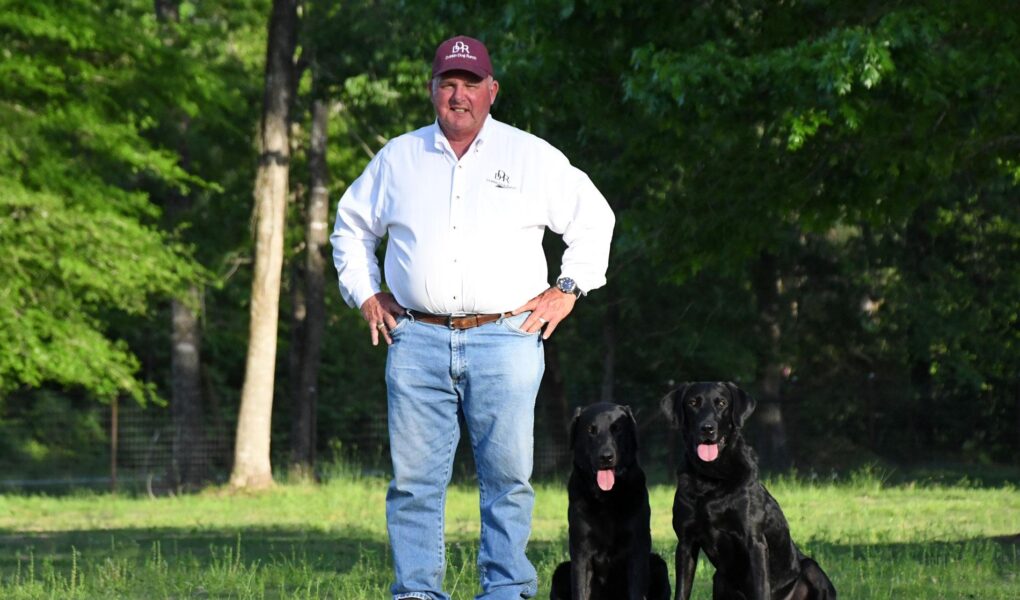In the vast expanse of ranchlands, where the horizon stretches endlessly and the air is filled with the scent of fresh hay and earth, a special bond forms between ranchers and their dogs. These loyal companions, trained with a unique blend of instinct and skill, play a crucial role in the daily rhythm of ranch life. From herding cattle to protecting livestock, ranch dogs are more than just pets; they are indispensable partners. This article delves into the art and science of ranch dog training, exploring the techniques, philosophies, and the mutual understanding that transform a spirited pup into a proficient working dog. Join us as we uncover the essential methods and heartfelt stories that bring these remarkable creatures to life on the ranch.
Table of Contents
- The Essential Traits of a Ranch Dog and How to Cultivate Them
- Training Techniques for Effective Herding and Livestock Protection
- Building a Strong Bond: The Role of Trust and Communication in Training
- Maintenance and Continued Education: Ensuring a Well-Rounded Ranch Dog
- Q&A
- In Retrospect
The Essential Traits of a Ranch Dog and How to Cultivate Them
When it comes to training a ranch dog, fostering essential traits is crucial for ensuring that the dog thrives in a challenging environment. A ranch dog should embody qualities such as intelligence, independence, and loyalty. These traits not only enhance their ability to perform tasks but also allow them to navigate the unpredictability of ranch life. To cultivate these attributes, owners should engage their dogs in activities that promote problem-solving, such as agility courses or scent work. Additionally, exposing them to various environments and stimuli will build their confidence and adaptability.
Moreover, a successful ranch dog should possess a strong work ethic and the ability to work collaboratively with humans and other animals. Consistency and positive reinforcement during training sessions are key elements in developing these characteristics. Make use of training drills that incorporate teamwork and herd management, such as:
- Herding exercises that promote teamwork with livestock
- Obstacle courses for enhancing agility and confidence
- Search and retrieve games to build a sense of purpose
To monitor progress, consider keeping a journal to note advancements in your ranch dog’s skills and temperament. This will not only help you track the cultivation of essential traits but also refine training strategies as needed. Below is a simple framework to evaluate your dog’s development:
| Trait | Current Skill Level | Remarks |
|---|---|---|
| Intelligence | Intermediate | Responds well to command variations |
| Independence | Beginner | Needs guidance in decision-making |
| Loyalty | Advanced | Strong attachment to handler |
Training Techniques for Effective Herding and Livestock Protection
Training a ranch dog requires a blend of patience, consistency, and understanding of both the dog and the livestock they will be working with. Essential techniques include:
- Positive Reinforcement: Rewarding desired behaviors encourages the dog to repeat them. Use treats, praise, or playtime as incentives.
- Clear Commands: Establish a set of simple commands that the dog can easily understand, such as “come,” “stay,” and “bring back.” Consistency is key.
- Desensitization: Gradually introducing the dog to livestock helps them become accustomed to their presence and reduces anxiety or aggressive behavior.
- Socialization: Expose the dog to various environments, animals, and people to enhance their adaptability and confidence.
In addition to foundational training, specific techniques can further refine a ranch dog’s skills:
| Technique | Description |
|---|---|
| Herding Instinct Training | Encouraging the dog’s natural herding instincts through controlled activities. |
| Boundary Training | Teaching the dog the limits of their working area to maintain the safety of livestock. |
| Mock Herding Sessions | Simulating herding scenarios to improve the dog’s response and maneuvering. |
Building a Strong Bond: The Role of Trust and Communication in Training
In the world of ranch dog training, the foundation of success lies in the relationship between the trainer and the dog. Building a robust connection requires trust and clear communication. When a dog feels secure in its environment and with its handler, it becomes more receptive to learning new commands and behaviors. The bond developed through consistent training sessions fosters a sense of safety, allowing the dog to take risks and explore new tasks without fear of punishment. To nurture this bond, consider the following practices:
- Establish a consistent training routine
- Use positive reinforcement techniques
- Encourage open communication through body language
- Acknowledge your dog’s feelings and anxieties
Moreover, effective communication is about more than just verbal cues; it includes understanding your dog’s reactions and emotions. Observing how your ranch dog responds to different commands and situations can provide valuable insights into its mindset. Implementing simple training tables can enhance this process, helping to visualize the relationship between commands and desired outcomes. Here’s an example of how you can structure your training objectives:
| Command | Expected Behavior | Training Method |
|---|---|---|
| Come | Dog approaches handler | Positive reinforcement with treats |
| Stay | Dog remains in place | Gradual distance increases |
| Heel | Dog walks beside handler | Leash guidance & praise |
Maintenance and Continued Education: Ensuring a Well-Rounded Ranch Dog
Ensuring that a ranch dog is well-rounded requires a commitment to both maintenance and continued education. Regular physical exercise is essential, as these dogs thrive on activity. Daily routines can include:
- Long walks or runs across the ranch
- Agility exercises for coordination and strength
- Interactive play sessions to stimulate their minds
In addition to physical care, mental training is crucial for a ranch dog’s development. Engaging them in various training programs not only sharpens their skills but also strengthens the bond between dog and handler. Consider implementing:
- Obedience classes for better responsiveness
- Herding practice to refine natural instincts
- Socialization with other animals and people to enhance adaptability
| Training Type | Benefits |
|---|---|
| Obedience Training | Improves commands, fosters discipline |
| Herding Exercises | Enhances working behavior, boosts confidence |
| Socialization Sessions | Promotes friendly behavior and reduces anxiety |
Q&A
Q&A: Understanding Ranch Dog Training
Q1: What is ranch dog training, and why is it important?
A1: Ranch dog training is a specialized form of obedience training tailored specifically for dogs that assist in herding livestock. This training is vital for ensuring that dogs can effectively and safely manage animals on the ranch, maintaining order and protecting both the herd and themselves. A well-trained ranch dog becomes an invaluable partner in maximizing efficiency and minimizing stress when working with livestock.
Q2: Can any dog become a ranch dog?
A2: While certain breeds, such as Australian Shepherds, Border Collies, and Corgis, have innate herding instincts that make them more naturally suited for ranch work, almost any dog can learn basic ranch dog skills with the right training. It largely depends on the individual dog’s temperament, eagerness to learn, and the training techniques employed.
Q3: What basic skills should a ranch dog learn?
A3: Ranch dogs should master several key skills, including basic obedience commands like sit, stay, and come. Additionally, they need to learn specific herding commands like “walk up,” ”lie down,” and “get back,” which guide their movements around livestock. Socialization is also critical, helping dogs learn how to interact with animals and humans safely.
Q4: How can I start training my dog for ranch work?
A4: Begin with foundational obedience training to ensure your dog listens to basic commands. Gradually introduce herding instincts through controlled exposure to livestock under supervision. Consider engaging with a professional trainer who specializes in ranch dog training, as they can provide invaluable insights and techniques tailored to your dog’s abilities.
Q5: What training methods are most effective for ranch dogs?
A5: Positive reinforcement is often the most effective method for training ranch dogs. This involves rewarding your dog with treats, praise, or play for desired behaviors, encouraging them to repeat those actions. Consistency and patience are key, as is the gradual introduction of new commands and experiences to build your dog’s confidence and skillset.
Q6: How long does it take to train a ranch dog effectively?
A6: The duration of training can vary widely based on the dog’s age, breed, and prior experience. Generally, you can expect basic training to take several weeks to months. However, advanced skills related to herding may continue to develop over time, often taking a year or more for dogs to become proficient and reliable partners in the field.
Q7: What challenges might I encounter during ranch dog training?
A7: Training a ranch dog may present several challenges, including the dog’s instinctual behaviors, potential distractions in a busy ranch environment, and the need for ongoing socialization with livestock and people. Some dogs may also display stubbornness or fearfulness, requiring additional patience and tailored approaches to overcome these hurdles.
Q8: Can ranch dog training benefit pets as well?
A8: Absolutely! While the main focus of ranch dog training is herding, the skills developed can enhance a pet dog’s overall obedience and behavior. The techniques used in training can lead to improved focus, reliability in commands, and better social interactions, making everyday life with your pet more enjoyable.
Q9: Are there any safety concerns to consider in ranch dog training?
A9: Yes, safety is paramount when training ranch dogs. Ensure that both the dog and livestock are kept calm during sessions. Introduce your dog to livestock slowly and under controlled conditions to prevent stress for both animals. Observing body language in both dogs and livestock can help prevent misunderstandings and potentially dangerous situations.
Q10: What resources are available for those interested in ranch dog training?
A10: Numerous resources are available, including books, online courses, and local training clubs specializing in ranch dog skills. Additionally, many professional trainers offer workshops or private sessions. Engaging with experienced ranchers or trainers can also provide valuable hands-on advice and mentorship as you embark on your ranch dog training journey.
This Q&A presents a comprehensive overview of ranch dog training, addressing potential questions readers may have while maintaining a neutral and informative tone.
In Retrospect
As we conclude our exploration into the world of ranch dog training, it’s evident that the bond between handler and canine extends far beyond simple commands and obedience. This partnership, steeped in tradition and necessity, is a testament to the remarkable capabilities of dogs and the dedication of their trainers. Whether you’re a seasoned rancher or a budding enthusiast, investing time in understanding your dog’s unique instincts and motivations can transform not just their performance but also the depth of your relationship. As you embark on your training journey, remember that patience and consistency are your best tools. The results, much like a well-tended crop, will require nurturing but will ultimately yield a harvest rich in loyalty, companionship, and mutual respect. In the vast landscape of ranch life, a well-trained dog is not just an asset; they are an invaluable partner, ready to tackle any challenge that comes your way. Happy training!



